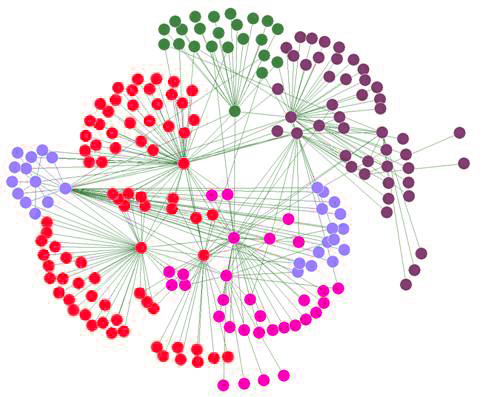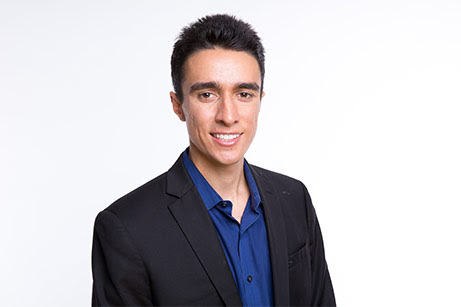When talking about something as sensational as viral marketing, it’s easy to exaggerate, embellish, extrapolate — and miss the forest for the trees.
What if I told you that, at the end of the day, creating viral marketing isn’t as much about science as it is about knowing the rules of play?
Granted, as Jonah Berger will tell you, there is some science to it. Just not nearly as you’d think. So, what is virality recipe ultimately comprised of, you ask? A dash of psychology, a dollop of chance, a heaping of good content, and a great headline on top: the 4 ingredients for virality.
Dash of psychology
Jonah Berger is a marketing professor at The Wharton School. But he isn’t a normal marketing professor. An expert on word of mouth, viral, and social marketing, his 2013 book Contagious: Why Things Catch On was a New York Times and WSJ bestseller.
He’s obsessed with the science of virality, has spent all of his career studying it — and yet his findings can be summed up quite neatly. Things go viral when they’re:
- Surprising
- Interesting
- Intense
- Positive
- Actionable
Numbers 4 and 5 are a bit more surprising than numbers 1 – 3, but this is news we’re talking about. Most news in the U.S. is gray and drab, so I think numbers 4 and 5 can be replaced by the word “Useful.”
Jonah also discovered that anything that could “awe” a reader trumped everything else — but of course awe isn’t exactly the type of feeling you can inspire every single time with your marketing. It’s not a particularly useful or viable metric. But it does explain why listicle sites like Cracked and Listverse have pieces that go viral despite their long length (around 1,000 to 2,500 words).
Jonah’s findings are very similar to Kelsey Libert and Kristin Tynski’s findings, published in HBR. They even created an emotional heat map to better describe the triggers for sharing:
Surprisingly, “anger”, “disgust”, and “fear” did not trigger a significant share response at all — which debunks the myth that confrontational content is always shared. And brand trust is less a factor in sharing than feelings of anticipation and surprise (the “awe” factor), but more of a factor than the feeling of joy.
Which, oddly enough, seems to debunk Berger’s assessment of “When we care, we share.” If anything, we share much more often when we’re plain surprised. A much simpler, and more elegant way to understand the psychology behind virality.
Dollop of chance
Even with this psychological armament, knowing when a given piece of content may become viral is a lot like trying to predict the movements of cat enthusiasts.
As Adam Mordecai, “viral curator” at UpWorthy puts it, “I predicted 100 of my posts would break 500,000 page views. 5 did.” He goes on to add, “Anyone who tells you he can make ANYTHING go viral is definitely not telling you the truth. Or is really naive. Almost nothing will. Even if it’s great.”
Eric Nakagawa would agree with Mordecai. Back in 2007, he created a blog that eventually sold for $2 million — purely by chance.
One day, he happened to post a photo of a fat cat he found on the internet with the caption “I can has cheezburger?” to his site as a joke, thinking nothing of it. This is what the original “meme” looked like.
Almost overnight, his site went viral. Does he have any idea why? Nope.
If we’re to look at the emotional heat map, it may be because he unknowingly hit it out of the ballpark in the “joy” and “surprise” categories of virality. Or it could be a combination of the right timing, the right channel, and the right cat. It’s almost impossible to measure.
Great headline on top
One thing that can easily be measured, however, is the success of a headline.
This metric is what UpWorthy built their entire business model on. It’s why their writers must create 25 headlines per piece (before the editors decide on one by group vote).
As you can imagine, it’s very easy to A/B test headlines, because they’re easy to produce and easy to switch in and out. They’re also the gatekeepers of clicks, which may in turn lead to shares.
Not everyone’s a fan of UpWorthy-style headlines. But that hardly matters, as the stats back up UpWorthy’s naming conventions. When A/B testing “normal” headlines alongside “UpWorthy” headlines, the latter are clicked on 2 to 4x more often.
Most likely because they build up anticipation — one of the two largest emotional buttons for virality (the other one being surprise).
Will you start writing 25 headlines for each of your blog posts? Probably not. But, if UpWorthy’s success is at all appealing to you — you should.
Heaping of good content
Of course, none of this matters unless you actually have great, useful content that surprises (and, best-case scenario, awes) readers. Which is much easier said than done.
A great headline and featured image will get you the clicks you want, but that doesn’t translate into shares unless the content itself is actionable.
So, if we were to assign the emotional heat map triggers for virality to headlines and content, the perfect recipe for virality might look something like this:
The Recipe: 4 Ingredients for Virality
The Headline
- must be surprising
- must build anticipation
The Content
- must be surprising
- should be inspirational (or at least make the reader feel good)
- has to be useful and actionable,
- so it can build trust and brand loyalty
Good luck.
Do you have a different recipe for virality? If so, chime in below.











